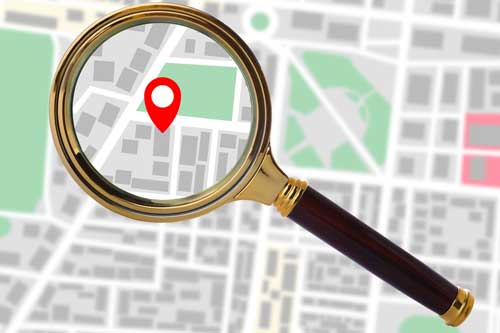Road Trip Ready? Don’t Skip the Engine Scan
Getting ready for a long journey? Before loading the car and hitting the road, ensure your engine is up to the task. Performing a detailed engine diagnostic scan before your road trip helps uncover hidden issues, enhances safety, and saves you from unwanted surprises.

1. Why Diagnostics Are Essential Before a Road Trip
Detect Hidden Faults Early
Subtle engine issues—such as a failing oxygen sensor or intermittent misfire—often go unnoticed until triggered by long-distance driving. Diagnostics can detect these faults before they lead to breakdowns or engine damage. In remote or unfamiliar locations, such a breakdown becomes costly and stressful.
Improve Fuel Economy and Performance
Vehicles with suboptimal performance—including incorrect air–fuel mix or weak sensors—burn more fuel and may feel sluggish. A diagnostic scan helps calibrate systems for maximum efficiency, ensuring smoother acceleration, consistent power delivery, and the best possible gas mileage during your trip.
Reduce Repair Costs Down the Road
Fixing an issue today—a loose intake hose or a worn spark plug—is far less expensive than dealing with a major engine failure mid-trip. A diagnostic scan helps pinpoint minor repairs early, often eliminating the need for roadside towing or emergency mechanic visits.
Enjoy Peace of Mind
Knowing your engine’s been fully scanned and cleared of error codes gives you psychological relief. You can travel without constantly scanning the dashboard for warning lights or harboring anxiety about unwanted mechanical issues.
2. What an Engine Diagnostic Scan Covers
Reading Diagnostic Trouble Codes (DTCs)
Every engine monitored by an OBD-II system logs codes when it detects faults. Whether it’s a misfire (P030X), a sensor malfunction, or a system error, mechanics read these codes to identify specific problems hiding beneath the hood.
Accessing Live Sensor Data
Modern scans go beyond static codes. Live data—real‑time readings of engine RPM, throttle position, coolant temperature, oxygen sensor voltages, and more—reveals subtle inefficiencies that might not trigger a code but indicate potential concerns.
Freeze‑Frame Snapshots
When a fault triggers a DTC, the system captures what sensor values looked like at the moment. This helps correlate the fault to circumstances like engine temp, RPM, or load—crucial for diagnosing intermittent or condition-dependent issues.
Comprehensive Fault Detection
From intake or manifold leaks and timing issues to exhaust system performance and fuel trim imbalances, professional diagnostic tools offer far more insight than a visual inspection alone.
3. Road Trip Maintenance Checklist: Diagnostics Coupled With Essentials
A. Fluids and Filters
-
Oil & Oil Filter: Old or low engine oil increases friction and wear—critical to replace or top up before long drives.
-
Coolant & Radiator: Maintain proper coolant level and ensure no blockages. Overheating can spell disaster on hot or mountainous routes.
-
Transmission & Brake Fluid: Important for reliable shifting and stopping power.
-
Air Filter & Spark Plugs: A clean filter lets air flow freely; fresh spark plugs ensure efficient ignition and consistent power.
B. Tire, Wheel, and Brake Inspection
-
Keep tire pressure within recommended limits—even on the spare tire. Undersized pressure reduces handling, increases wear, and wastes fuel.
-
Inspect tire tread depth—worn tires risk aquaplaning and poor grip.
-
Check brake pads, rotors, and brake fluid—essential for safety and peace of mind during long drives or descents.
C. Electrical Systems, Belts, and Bodywork
-
Battery & Alternator: Ensure terminals are clean, the battery holds charge, and the alternator maintains correct voltage.
-
Belts & Hoses: Inspect for cracks, leaks, or signs of wear. A snapped belt can disable critical systems mid-trip.
-
Lighting & Wipers: Confirm headlights, brake lights, turn signals, and wipers are all operational to guarantee safety.
-
Finally, run your diagnostic scan to ensure internal systems are alert and clear of issues.
4. Benefits of Performing Diagnostics Before Travel
-
✅ Breakdown Prevention: Diagnostics catch problems before they escalate—no surprises on long stretches of road.
-
✅ Safety Confidence: Healthy engine systems, sensors, and cooling components reduce the risk of stalling or overheating en route.
-
✅ Fuel and Cost Efficiency: Early fixes—like replacing a failing sensor or filter—mean smoother engine operation and better mileage.
-
✅ Streamlined Roadside Aid: If something happens mid-trip, having a diagnostic history helps mechanics troubleshoot faster and more accurately.
5. Real-World Faults Diagnostics Detect
• Timing Belt or Chain Wear
Misaligned timing can lead to poor engine performance—or worse, catastrophic failure if ignored. Diagnostics paired with visual checks ensure it’s caught before collapse.
• Vacuum or Intake Leaks
Air leaks trigger inconsistent idle, shaky performance, and poor fuel economy. Sensors may report lean mixtures; scans help identify such conditions accurately.
• Sensor Failures (MAF, TPS, O2 Sensors)
Malfunctioning sensors disrupt the engine’s electronic management system, resulting in poor fuel mapping, reduced power, and trigger lights—even before noticeable symptoms appear.
• Weak Battery or Charging System
Voltage readings that fluctuate under load are often imperceptible by eye but detectable via scan tools. This sort of electrical inconsistency can result in stalling during highway travel or while using high-draw accessories like A/C or defrosters.
6. When and Where to Obtain a Pre-Trip Diagnostic Scan
Timing for Service
-
One week prior to departure is ideal, allowing time to address issues.
-
Book alongside standard seasonal services like oil change or filter replacement.
Choosing a Service Provider
-
Opt for certified mechanics with OBD-II scanning capability.
-
Look for bundled service offers—diagnostic plus visual inspection or fluid change—to save time and money.
What to Bring Along
-
Observed symptoms or driving issues (hesitation, noise, stalling).
-
Recent maintenance records or known service history.
-
Owner’s manual can help mechanics reference service intervals and specs.
7. Pre-Trip Planning Timeline
| Time Before Trip | Recommended Actions |
|---|---|
| 1 Week | Schedule engine diagnostic + basic fluid/filter check |
| 3–4 Days | Repair or replace any flagged issues |
| 1 Day Before Trip | Final check of tires, belts, and visible damage |
| Day of Departure | Pack emergency kit and keep your diagnostic report |
8. Strategies for Maximizing Diagnostic Value
-
Request live data logging during scan—seeing how engine functions under real-time load, temperature, and speed helps catch issues not always visible in static codes.
-
Inquire about inspecting the timing belt or chain, especially if mileage approaches or exceeds recommended replacement intervals.
-
Ask for battery and alternator load testing—older vehicles are prone to electrical fatigue that only appears under stress.
-
Obtain a detailed diagnostic printout or digital report—this helps roadside mechanics or future service providers assess your vehicle’s baseline condition quickly.
9. Roadside Kit Essentials
Even with diagnostics, you need to prepare for emergencies:
-
Spare tire and tire tools
-
Jumper cables or jump-starter
-
Extra coolant, oil, basic fuse kit
-
Multi-tool, first-aid supplies, water, snacks, and flashlight
-
Physical or digital copy of your diagnostic scan report
-
Important contact numbers: roadside service, mechanic, insurance hotline
10. Final Thoughts: Diagnostics as Your Road Trip Guarantee
A professional engine diagnostic scan before a road trip offers a range of benefits:
-
Early detection of issues before they escalate
-
Confirmation your vehicle’s ready for high-mileage travel
-
Increased safety and consistent performance
-
Maintenance transparency for future service needs
-
Mental relief: drive with confidence
Ready for Smooth, Safe Travel?
Book your pre-trip engine diagnostic today. Combine it with fluid changes, belt inspections, and visual checks to prepare for a worry-free journey. Go ahead—explore the open road without engine doubts holding you back.

